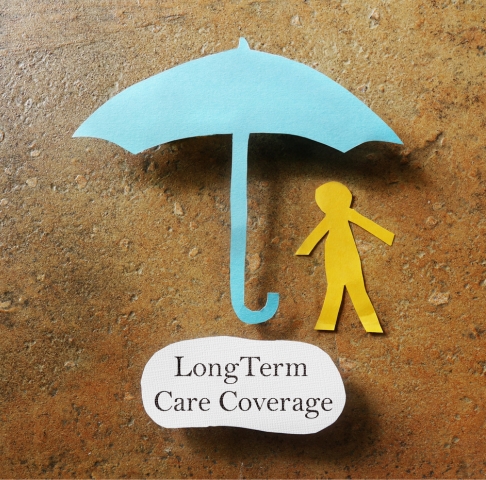If there’s anything that could get in the way of me being unstoppable in life, I’d want to do something about it while I still can – whether that's setting up a Lasting Power of Attorney or drawing up a will while I still have the mental capacity to do so. Increasing my knowledge about things that could throw me off course, like severe disability, is also paramount.
You may have watched movies like Breathe (2017) and The Theory of Everything (2014) where the protagonist is disabled or you may have a colleague who looks after a disabled family member, but how far does your knowledge about severe disability really go? In fact, if you’re an “unstoppable” person in your 20s, 30s or 40s – someone young and fit who wants to do everything and be everywhere all at once – should you even bother about severe disability?
Test your knowledge about severe disability and let the results help you decide if it’s worth your attention.
How much do you know about severe disability? Take this quiz to find out.

Which movie features a severely disabled lead character?
Correct
Answer: You’re Not You
This film is about Kate, a pianist diagnosed with ALS (amyotrophic lateral sclerosis), also known as Lou Gehrig’s disease, which affects nerve cells in the brain and spinal cord that control voluntary muscle movement. As her physical condition declines and her marriage fails, she hires Bec as a caregiver. They form a bond as Kate finds adventure and humour in life while Bec gets the stability she needs.
Incorrect
Answer: You’re Not You
This film is about Kate, a pianist diagnosed with ALS (amyotrophic lateral sclerosis), also known as Lou Gehrig’s disease, which affects nerve cells in the brain and spinal cord that control voluntary muscle movement. As her physical condition declines and her marriage fails, she hires Bec as a caregiver. They form a bond as Kate finds adventure and humour in life while Bec gets the stability she needs.
Severe disability is an “old person’s problem” – people under 65 don’t need to worry about it.
Correct
Answer: False
While many severely disabled individuals are seniors with health issues that progress as people get older, severe disability can arise at any age. For instance, every year, more than 100 individuals from as young as 40 are diagnosed with young-onset dementia*, and dementia can lead to difficulty performing daily activities of living over time. Severe disability could also be due to sudden events such as stroke and spinal cord injuries which can affect people as young as 30; or the worsening of chronic conditions and diseases.
*Source: Home - DementiaHub.SG , "What is young-onset dementia?", accessed on 21 March 2024.
Incorrect
Answer: False
While many severely disabled individuals are seniors with health issues that progress as people get older, severe disability can arise at any age. For instance, every year, more than 100 individuals from as young as 40 are diagnosed with young-onset dementia*, and dementia can lead to difficulty performing daily activities of living over time. Severe disability could also be due to sudden events such as stroke and spinal cord injuries which can affect people as young as 30; or the worsening of chronic conditions and diseases.
*Source: Home - DementiaHub.SG , "What is young-onset dementia?", accessed on 21 March 2024.
Life insurance policies give a payout in the event of severe disability.
Correct
Answer: False
Many life insurance plans are bundled with total and permanent disability coverage which gives a lump-sum payout when an individual a) becomes unable to use both arms, both legs, or both eyes or either of them, or b) becomes unable to work for the rest of their life due to injury or sickness. However, life insurance plans do not give a payout for severe disability, i.e. when one cannot perform at least three of the six activities of daily living (washing, toileting, walking or moving around, transferring, feeding and dressing) independently. Severe disability may be prolonged but is not necessarily permanent.
Incorrect
Answer: False
Many life insurance plans are bundled with total and permanent disability coverage which gives a lump-sum payout when an individual a) becomes unable to use both arms, both legs, or both eyes or either of them, or b) becomes unable to work for the rest of their life due to injury or sickness. However, life insurance plans do not give a payout for severe disability, i.e. when one cannot perform at least three of the six activities of daily living (washing, toileting, walking or moving around, transferring, feeding and dressing) independently. Severe disability may be prolonged but is not necessarily permanent.
An individual insured under CareShield Life can claim long-term care benefits when .
Correct
Answer: He or she is unable to walk, feed and dress independently
Our national long-term care insurance scheme CareShield Life gives a monthly payout when you’re unable to perform at least three of the six activities of daily living (washing, toileting, walking or moving around, transferring, feeding and dressing) independently. The payout for 2025 is S$662 per month and from 2026, this will rise to S$689, with payouts increasing by 4% each year, up from 2%. With certain government-approved supplement plans from private insurers, you could start receiving payouts earlier, when you’re unable to perform just one or two activities of daily living.
Incorrect
Answer: He or she is unable to walk, feed and dress independently
Our national long-term care insurance scheme CareShield Life gives a monthly payout when you’re unable to perform at least three of the six activities of daily living (washing, toileting, walking or moving around, transferring, feeding and dressing) independently. The payout for 2025 is S$662 per month and from 2026, this will rise to S$689, with payouts increasing by 4% each year, up from 2%. With certain government-approved supplement plans from private insurers, you could start receiving payouts earlier, when you’re unable to perform just one or two activities of daily living.
How much would you need for long-term care costs should you become severely disabled?
Correct
Answer: More than S$2,000 a month
While the amount varies depending on the extent of severe disability, Singlife’s 2024 Long-Term Care survey shows that care costs an average of S$2,952 a month, rising roughly 4% each year. This covers the cost of things like hiring a caregiver, medication, therapy and assistive devices and mobility aids such as feeding equipment. Singlife Financial Advisers’ Head of Product, Pang May Yee, shares, “On top of these, other costs to consider are income loss and depletion of savings when family members take a work break or can only work on a part-time basis in order to look after the disabled person.”
Incorrect
Answer: More than S$2,000 a month
While the amount varies depending on the extent of severe disability, Singlife’s 2024 Long-Term Care survey shows that care costs an average of S$2,952 a month, rising roughly 4% each year. This covers the cost of things like hiring a caregiver, medication, therapy and assistive devices and mobility aids such as feeding equipment. Singlife Financial Advisers’ Head of Product, Pang May Yee, shares, “On top of these, other costs to consider are income loss and depletion of savings when family members take a work break or can only work on a part-time basis in order to look after the disabled person.”








